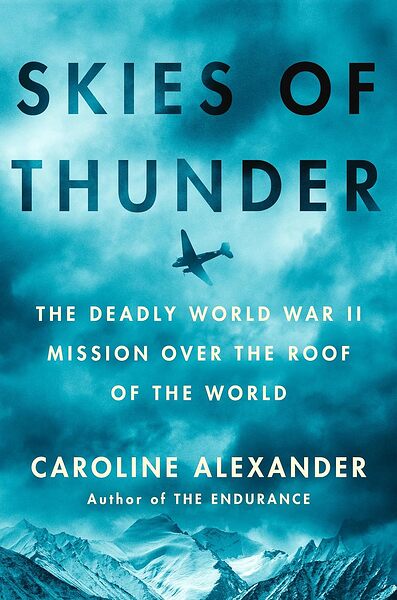Looking for a good read? Here is a recommendation. I have an unusual approach to reviewing books. I review books I feel merit a review. Each review is an opportunity to recommend a book. If I do not think a book is worth reading, I find another book to review. You do not have to agree with everything every author has written (I do not), but the fiction I review is entertaining (and often thought-provoking) and the non-fiction contain ideas worth reading.
Book Review
Over the Roof of the World
Reviewed by Mark Lardas
July 14, 2024
“Skies of Thunder: The Deadly World War II Mission Over the Roof of the World,” by Caroline Alexander, Viking, 2024, 496 pages, $32.00 (Hardcover), $13.99 (e-book)
One incredible achievement during World War II was US supply of China over the Himalaya Mountains. An airlift over some of the worlds’ most difficult terrain, by war’s end it moved over 750 thousand tons of cargo to China. The aircrew flying it route called the route “The Hump.”
“Skies of Thunder: The Deadly World War II Mission Over the Roof of the World,” by Caroline Alexander, tells the story of the Hump. The book describes the airlift, what it took to assemble the resources to conduct it, and the circumstances leading to starting and continuing it.
Ms. Alexander opens by sketching in the background, describing the wars between China and Japan and the need to supply Chinese armies from abroad. Eventually, the sole path to China was the overland Burma Road, between Rangoon, Burma (now called Myanmar), and Kunming, China. In December 1941, Japan attacked the United States and Britain. Japan invaded Burma, a British colony. A disastrous British defense allowed Japan to capture most of Burma, which Ms. Alexander describes in painful detail. It severed the Burma Road.
President Roosevelt wanted China to remain in the war, tying down Japanese forces that could otherwise be sent to fight against American troops. He directed the United States Army Air Forces to airlift supplies to China. Ms. Alexander describes what follows.
She shows how the airlift grew from unsteady origins to a well-polished organization delivering over 20,000 tons of supplies monthly in 1945. She describes the route’s challenges: geographic, logistical, technological, and military. It crossed high mountains and dense jungle, and flew through some of the world’s worst weather.
The starting point for the Hump was 18,000 miles from the United States. The aircraft used were untested, and the aircrew consisted of those who were available after all other priorities were filled.
The participants were varied and many became or were well-known. Actor Gene Autry and author Ernest Gann were pilots who crossed the Hump. Correspondent Eric Sevareid crashed during a Hump flight and walked out through the jungle. Authors John Masters and George Macdonald Frasier were infantry officers in Japan-occupied Burma, just south of the Hump route. Journalist Joseph Alsop served with the 14th Air Force stationed in Burma. Ms. Alexander evaluates Allied military leaders including Joseph Stillwell, Claire Chennault, William Slim, and Orde Windgate—some favorably, others not.
“Skies of Thunder” is an incisive study of the Hump, and the aerial supply of China. Alexander provides a comprehensive campaign report, and a clear-eyed assessment of its successes and failures. The text is lively, balancing technical and human factors, to yield a fascinating account of a difficult campaign.
Mark Lardas, an engineer, freelance writer, historian, and model-maker, lives in League City, TX. His website is marklardas.com. This review appeared in a different form in Epoch Times.
